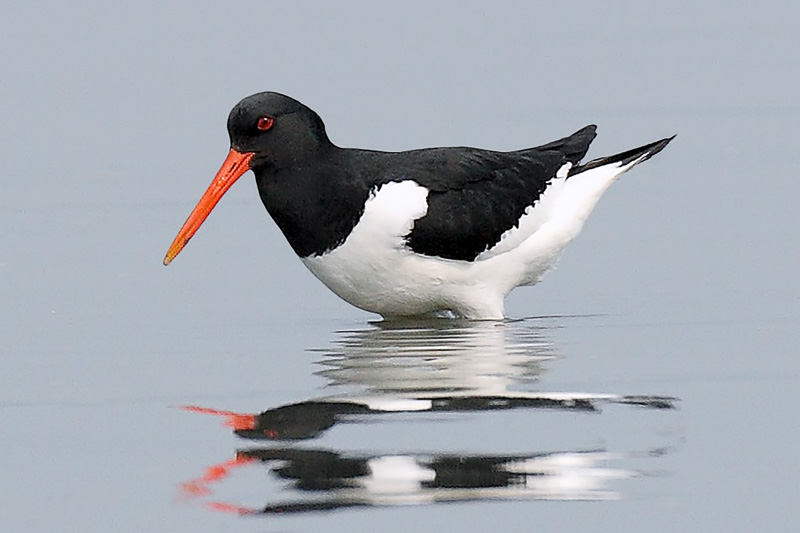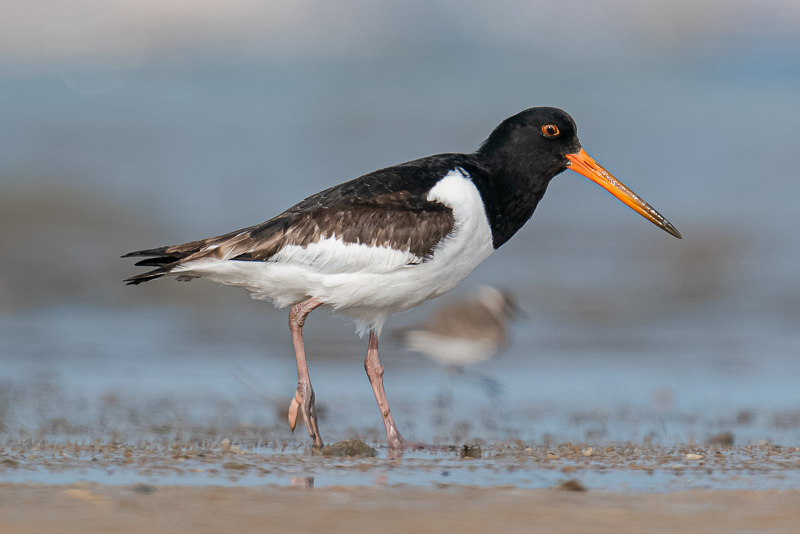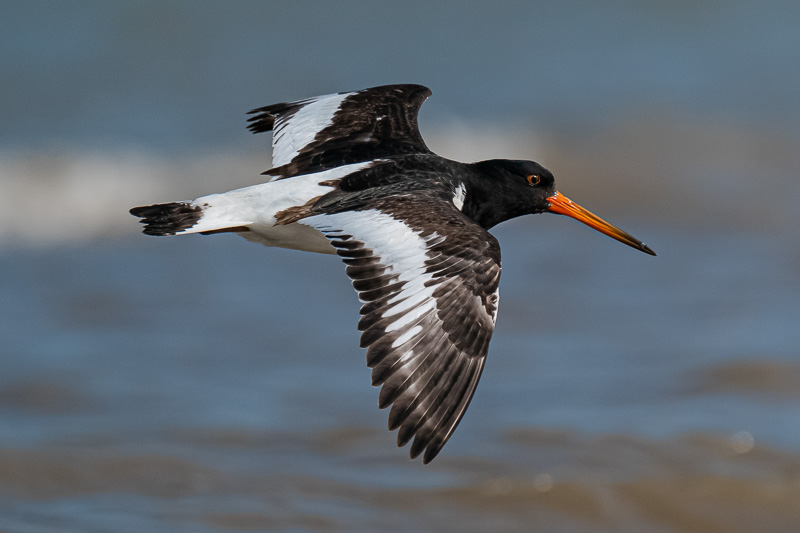Eurasian Oystercatcher Haematopus ostralegus 蠣鷸
Category I. Accidental.
IDENTIFICATION

Apr. 2009, Michelle and Peter Wong. Adult.
40-48 cm. Highly distinctive stocky, pied and often vocal shorebird. Adult has jet black upperparts, head and chest, white underparts, fairly long orange or orange-red bill, red orbital ring and pink legs.

Dec. 2020, Kenneth Lam. First-winter.
Dull legs, dark-tipped bill and brown-toned worn coverts and tertials indicate this is a first-winter bird (Melville et al. 2014).

Dec. 2020, Kenneth Lam. First-winter.
In flight dark apart from white rump, much of tail and bases to the primaries and secondaries forming a distinctive pied pattern. Brown tone to primaries and coverts indicate this is a first-winter bird (Melville et al. 2014)
VOCALISATIONS
Calls are typically loud and distinct, with the most frequently heard flight call being a ‘ch-peep’ or a single ‘peep.
DISTRIBUTION & HABITAT PREFERENCE
All birds have occurred on the intertidal mudflats of Deep Bay.
OCCURRENCE
2000: one during 9-10 December.
2009: an adult and a first-summer on 9 April.
2010: a first-winter during 9-11 January.
2011: an immature on 6 December.
2013: an immature on 5 April.
2020: a first-winter bird at Pak Nai from 21 November to 16 February 2021.
2021: an adult on 7 April.
RANGE & SYSTEMATICS
H. o. osculans breeds in the Kamchatka and Korean peninsulas and northeast China and, based on examination of photographs, is considered to be the taxon occurring in HK (D. S. Melville in litt.). Three other subspecies are recognised, including H. o. longipes in northwest China.
Occurs from Iceland through Europe to coastal northwest Africa, the Middle East, coastal India, western Russia and Kazakhstan to northeast and east Asia, where it is largely a coastal species (Hockey et al. 2020). In China osculans breeds locally along the east coast from Hebei to Shanghai and winters along the lower reaches of the Yangtze and locally in coastal areas of the south, while longipes breeds locally in northern Xinjiang and is a migrant in Tibet (Liu and Chen 2021).
Melville et al. (2014) summarise features differentiating H. o. osculans from nominate ostralegus and H. o. longipes, the latter of which could occur in HK.
CONSERVATION STATUS
IUCN: Near-threatened. Population trend decreasing. Suspected of undergoing a population reduction over the past three generations that approaches the threshold for listing as Threatened; however, this decline may be part of longer-term fluctuation.
Hockey, P., G. M. Kirwan and P. F. D. Boesman (2020). Eurasian Oystercatcher (Haematopus ostralegus), version 1.0. In Birds of the World (S. M. Billerman, B. K. Keeney, P. G. Rodewald, and T. S. Schulenberg, Editors). Cornell Lab of Ornithology, Ithaca, NY, USA. https://doi.org/10.2173/bow.euroys1.01
Liu, Y. and S. H. Chen (eds) (2021). The CNG Field Guide to the Birds of China (in Chinese). Hunan Science and Technology Publication House, Changsha.
Melville, D. S., Y. N. Gerasimov, N. Moores, Y.-T. Yu and Q. Q. Bai (2014). Conservation Assessment of Far Eastern Oystercatcher Haematopus [ostralegus] osculans. International Wader Studies 20: 129-154.

